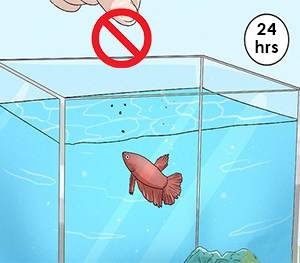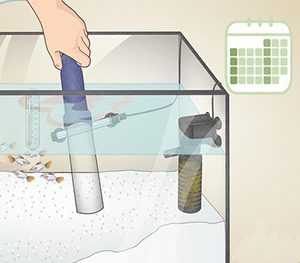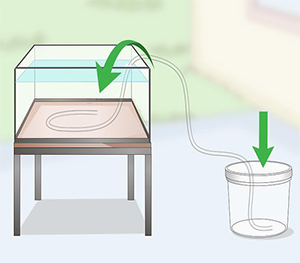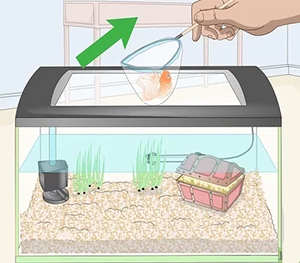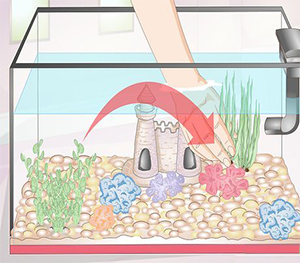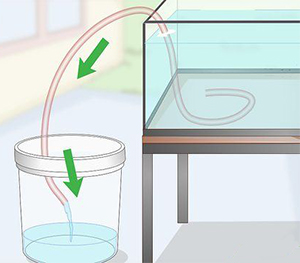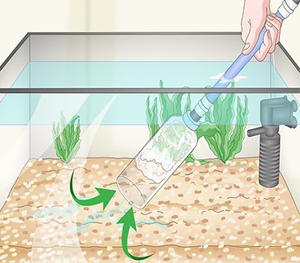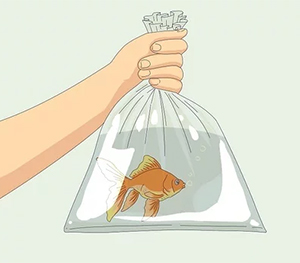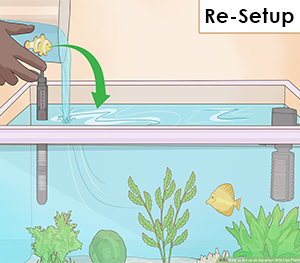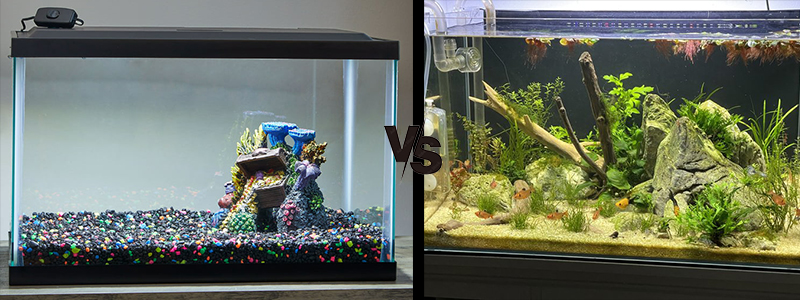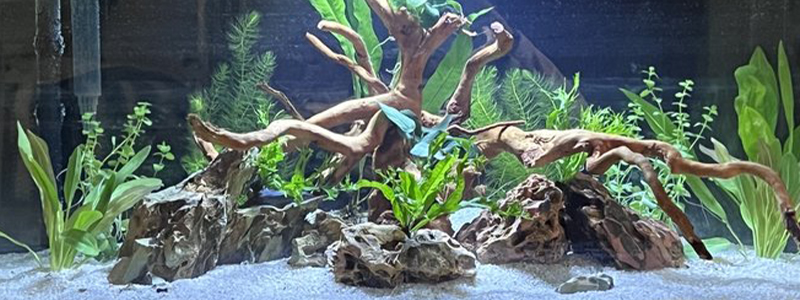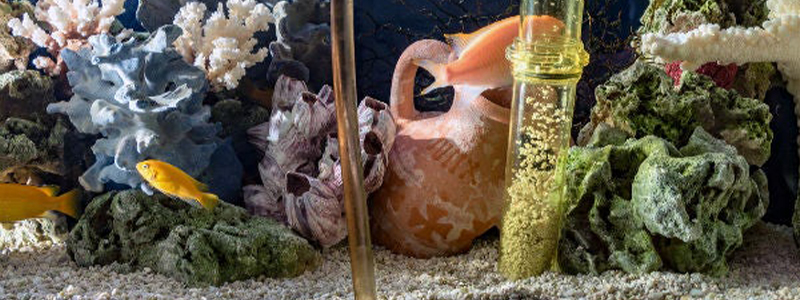If you are the owner of a beloved fish tank and need to move, it’s important to ensure the safety and well-being of your aquatic pets during the relocation process.
Moving fish to a new tank or moving fish tank to new house can be a challenging task, but with proper planning and guidance from professionals, it is entirely manageable.
To help you in moving fish from one tank to another, we are going to provide the best way to move a fish tank that will make this process a lot smoother and safer.
Disclosure: This article contains affiliate links. When you follow a link to purchase the products, I sometime earn a commission, at no additional cost to you. Read my full disclosure here.
The Best Way to Move a Fish Tank
Preparation: Gather Your Supplies
- Fish Containers: It is important to have suitable containers such as buckets, plastic bags, or secure containers for transporting your fish safely. For shorter trips, small fish can be placed in sealed plastic bags, while larger fish or longer journeys may require clean 5-gallon buckets with tightly fitting lids.
- Plant Containers: When it comes to transporting aquatic plants, make sure they are kept in containers filled with tank water during transportation.
- Tape: Make sure you have packing tape or duct tape available to securely fasten the lids on both your fish and plant containers.
- Fishnet: Having a fishnet is crucial for safely moving your fish from the tank into their transport containers.
- Siphon Hose: This hose can assist in the removal of water from the tank, facilitating easier relocation.
- Additional Packing Supplies: Keep an adequate supply of materials for transporting your equipment, decorations, and the tank itself. These may include air-filled plastic padding, packing paper, foam board insulation, and either cardboard or plastic moving boxes.
By gathering these supplies beforehand you will be fully prepared for a seamless and secure process of moving fish to new tank!
The Process of Moving Fish to New Tank
Transporting your fish when moving fish tank to a new house or moving fish from one tank to another requires some necessary items such as fish and plant containers, tape, a fishnet, a siphon hose, and packing materials.
It is crucial to take into consideration supplementary items like fish food and stands that are situated outside the tank as well.
Moreover, keep in mind that moving fish to a new tank is not an easy task, thus you will need some assistance available along with ample time since relocating an aquarium.
Step 1: Giving Your Fish a Break from Feeding:
It’s very important to bear in mind not to feed your aquatic pets for 24 hours before the transfer before starting the fish tank move. By reducing the amount of fish waste produced while in transit, safe ammonia levels are maintained without the need for a filter.
Step 2: Turn Off and Remove all Equipment
When you’re prepared to start the process of moving fish tank to new house, the second step is to turn off and remove all of your tank’s equipment, including heaters, pumps, and filters. To avoid damage, each piece requires specific handling:
- Heaters: Turn off the heater and remove it from the water after it has cooled for about 30 minutes. This avoids sudden temperature swings that might damage the heater. To protect it during transport, wrap it carefully in towels or bubble wrap.
- Filters: For the long-term health of your tank, it’s essential to maintain the beneficial bacteria in your filter. To ensure the filter media’s survival during transport, keep it damp by putting it in a partially filled bag of tank water.
- Pumps: Before moving fish from one tank to another, air stones or pumps should be unplugged and securely packed away because they are less fragile.
Step 3: Siphon Water into Container
Approximately 75% to 80% of the tank water should be transferred into lidded plastic bags or boxes using water containers and a siphon after the equipment has been removed safely.
A portion of this water will also go into the aquariums you have for your plants and fish. When moving fish to a new tank, preserving as much water as possible reduces the need for significant water changes.
Step 4: Remove Your Fish
When moving fish from one tank to another, it is important to gently lift your fish from the tank using an aquarium net and place them into a temporary container.
It is advisable to remove the fish before handling anything else in the tank to minimize stress. However, if there are large decorations like rocks or pirate ships that may limit hiding spots for your fish, they may need to be removed first.
Here are some useful tips for moving fish to new tank:
- To prevent water quality issues in their container, avoid moving fish with full stomach.
- Upon relocating your fish, continue their regular feeding schedule.
- If you are moving fish tank to new house, consider using an air pump in the container to ensure well-oxygenated water.
- Always use a covered container such as a lidded bowl or securely closed bag since fishes may attempt to jump out. A covered container also provides darkness which keeps them calm.
- Aggressive fishes should be separated to prevent conflicts whereas peaceful fishes can be kept together without any problem.
Step 5: Move Additional Items
Live plants, in addition to your fish, need particular attention. Remove any large rocks or decorations with a fishnet, and then set them aside to dry and pack separately. Put the plants in a bucket that has tank water in it.
Step 6: Syphon the Remaining Water and Store It
It’s best to conserve as much of the water from the original tank as you can to make the process of moving fish from one tank to another, easier.
The next step is to siphon out as much water as you can after removing everything from the tank except the substrate. By doing this, you can set up your aquarium more quickly and without having to prepare a lot of new water or perform extensive water changes.
Step 7: Remove the Gravel
Remove the sand or dirt from the tank after all the water and accessories have been taken out. The tank should then be thoroughly cleaned and dried before moving fish to new tank.
Make sure to keep the substrate apart from the dry items, and label everything so it’s simple to find it when you’re ready to reassemble.
Step 8: Moving Your Fish Tank
The time has come to move your fish tank once all of its parts, including the water, fish, plants, machinery, decorations, and substrate, have been securely packed away. Depending on how far you’ll be traveling, you can:
- Within the same space: When moving the fish from one tank to another, within the same space, it is advisable to prepare a stable furniture piece beforehand. This will provide a secure location for the tank without causing any strain or potential damage.
- During a house move: When moving fish tank to a new house, it is recommended to pack the tank carefully in a durable cardboard box with appropriate cushioning materials such as bubble wrap and Styrofoam. It’s important to avoid placing heavy objects on or near the tank during transportation.
Additionally, ensure that your fish are kept close by so they can be monitored throughout the process.
Step 9: Re-Setup Your Aquarium
- Prepare the decor and substrate: Spread the aquarium substrate evenly along the base before adding it. Add any additional decor on top.
- Refill with Water You Saved: Use the water you stored in containers to refill the tank. The water level should then rise to approximately halfway or slightly above.
- Reinstalling the Equipment: After repositioning put all of the apparatus back into the aquarium and turn them on. Make sure the heater has enough time to heat the water to the appropriate temperature.
- Live Plants Replanted: Replant any live plants you have. If necessary, consult a guide, but if you have a lot of plants, think about doing this step on a different day to save time.
- Reintroduce Fish Gradually: Fish should be reintroduced gradually as if new fish were being added. When releasing fish that had been carried in bags, let them float on the surface of the water for about 45 minutes. To reduce stress, keep the lights off during this phase and for the next few hours.
- Add Dechlorinated Water to the Top: If necessary, add dechlorinated water to the tank to make certain it is filled to the right levels. If you don’t have a de-chlorinator, use a suitable one.
How to Move a Fish Tank a Short Distance?
Although it may be tempting to avoid the effort of emptying and transporting your tank, particularly if it is small and not too heavy, we highly recommend against this.
Professionally relocating your tank, even for short distances, is the most secure and optimal method to guarantee the health of your fish and plants during this potentially demanding time.
Moreover, it proves to be a cost-effective solution as compared to replacing damaged equipment or purchasing new livestock or tanks in case any mishap occurs.
Can you move a fish tank with water in it?
A fish tank with water in it should never be moved. The weight and motion of the water present several hazards to your safety and the safety of the tank.
These dangers include the potential for slips brought on by water spills and the possibility of seal damage from the extra weight. Before moving fish tank to new house or within the same space, it is always a better idea to empty it.
How long can fish survive in a bag?
Under the right circumstances, fish can usually survive for 6 to 9 hours inside a plastic bag that has been tightly closed. To ensure the welfare of the fish, it is strongly advised not to keep them in a bag for longer than a few hours at most when moving fish to new tank.
What is the best place to put a fish tank in your house?
To avoid temperature changes and excessive algae growth, the best place to put a fish tank in your house is away from direct sunlight is the ideal place to keep a fish tank in your home.
Make sure the space has a constant temperature, good lighting, accessible power outlets, and enough room to fit the tank without being crowded.
Place a priority on accessibility for maintenance and ensure that the area can support the weight of the tank by using a suitable stand if necessary.
Conclusion
Moving fish tank to new house can pose logistical challenges and even moving fish from one tank to another can pose potential risks to the aquarium.
Therefore, when moving long distances, selling the tank locally may be a practical choice.
However, with careful planning and proper handling techniques, it is possible to safely transport your tank. If feasible, consider using your own vehicle as not all movers are equipped for delicate cargo like aquariums.

